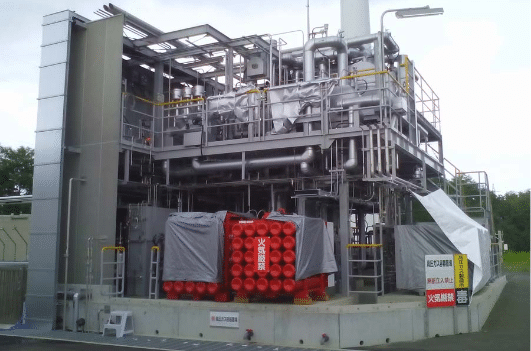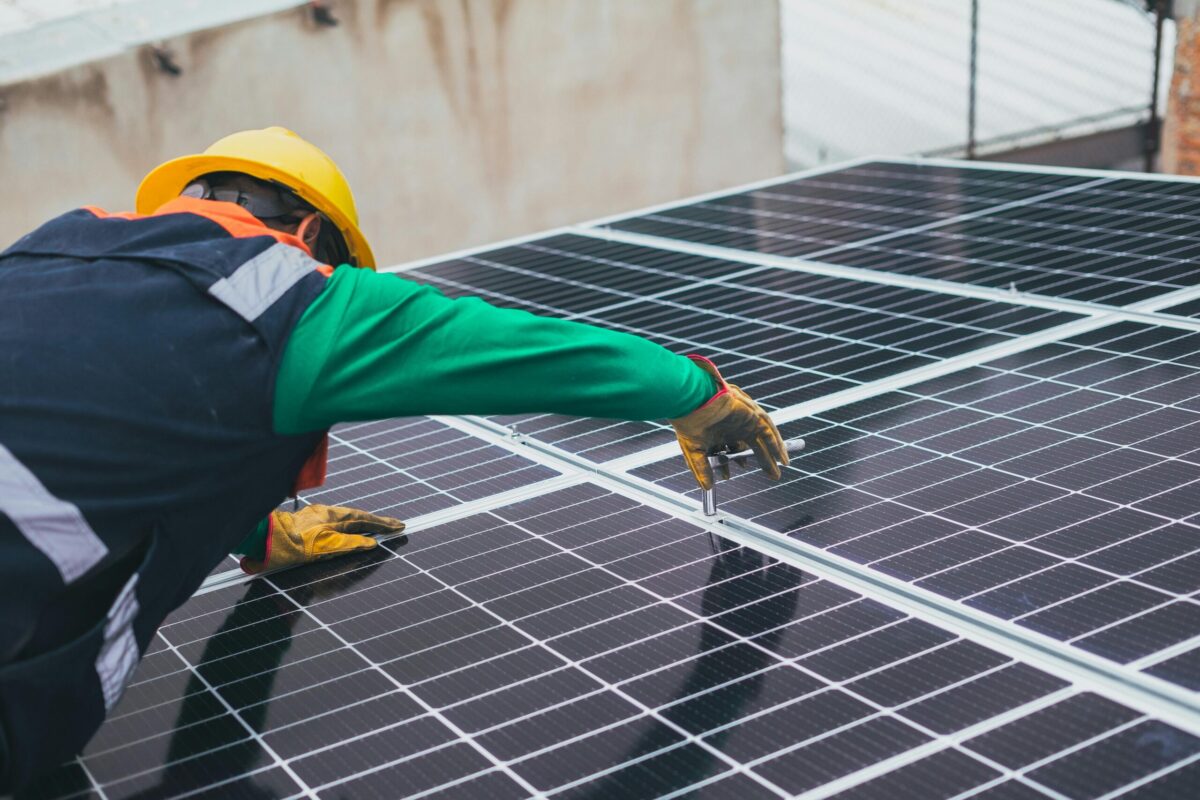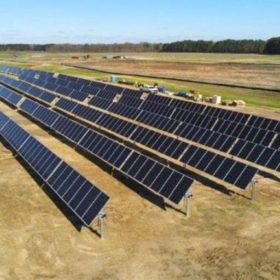JGC Corporation and the Japanese National Institute of Advanced Industrial Science and Technology have demonstrated a system that uses solar power to produce hydrogen, which is then converted to ammonia in an energy-efficient manner, and then used to generate electricity by combustion in a gas turbine. The process is “CO2-free from production to power generation,” according to a joint press statement.
The company says it has developed a ruthenium based catalyst to synthesize ammonia from hydrogen and nitrogen at low temperature and pressure. Ammonia is an “ideal energy carrier for hydrogen,” says the press statement, in part because using hydrogen as a fuel raises “questions of cost and safety, [and] efficiency of transport and storage.” Ammonia also “contains a large amount of hydrogen, is easily liquefied and is already widely used as a fertilizer, meaning that a supply chain is in place.”
JGC’s new approach to producing ammonia is described in the following diagram, compared to the conventional process at the bottom:
As for round-trip efficiency, the first step of producing hydrogen via electrolysis of water could soon reach an efficiency of up to 90%, according to the U.S. Energy Storage Association. As for the second step of converting hydrogen to ammonia, JGC did not disclose the efficiency of its process, while for the third and final step of combusting ammonia, a research presentation by Hideaki Kobayashi of Tohoku University showed that the thermal efficiency of combusting an ammonia-air mixture was close to that for combusting a mixture of methane (natural gas) and air; nitrogen oxide emissions were reduced via selective catalytic reduction.
Japan intends to create an “innovative low-carbon hydrogen-fueled economy” by 2030, according to JGC’s joint statement with the National Institute of Advanced Industrial Science, and to “take the lead in hydrogen-related industries on the world market” through its energy carriers research.
Australia is also evaluating renewable produced hydrogen, with the Australian Renewable Energy Agency having issued a report on the topic last August.
Meanwhile, The United Kingdom’s Committee on Climate Change noted in a November report that “hydrogen could be produced at low cost… from solar power near the equator. This would need to be imported via ships, either as hydrogen or another energy carrier such as ammonia.” The committee projected that for England, “burning hydrogen in power stations will be cost-effective against the government’s carbon values in the 2030s.”
Achieving scale in converting renewable power to ammonia could be aided via the shipping industry. The International Renewable Energy Agency said in an April 2018 report that its “overall recommendation for developing P2X [renewable power to fuel] is to focus on the development of ammonia for the shipping sector as well as long haul road transport, where few or no competing low carbon technologies exist and P2X is expected to be economically viable.”
This content is protected by copyright and may not be reused. If you want to cooperate with us and would like to reuse some of our content, please contact: editors@pv-magazine.com.









By submitting this form you agree to pv magazine using your data for the purposes of publishing your comment.
Your personal data will only be disclosed or otherwise transmitted to third parties for the purposes of spam filtering or if this is necessary for technical maintenance of the website. Any other transfer to third parties will not take place unless this is justified on the basis of applicable data protection regulations or if pv magazine is legally obliged to do so.
You may revoke this consent at any time with effect for the future, in which case your personal data will be deleted immediately. Otherwise, your data will be deleted if pv magazine has processed your request or the purpose of data storage is fulfilled.
Further information on data privacy can be found in our Data Protection Policy.